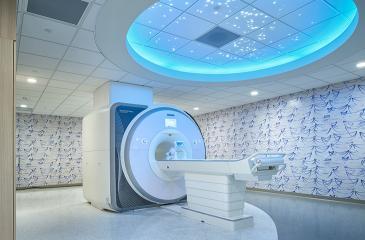Largest Long-Term Study of Early Brain and Child Development Launches at University of Minnesota
University of Minnesota researchers are launching enrollment for the largest long-term study of early brain and child development in the United States. The HEALthy Brain and Child Development (HBCD) study, is now enrolling individuals from around the United States, including in Minnesota, who are in the second trimester of pregnancy.
The University of Minnesota was selected as one of 28 recruitment sites across the country for the project, and also serves a key role in the central HBCD Data Coordinating Center. The study will enroll about 7,500 pregnant people nationwide and follow them and their children for up to 10 years through infancy and childhood. The HBCD study is part of the broader National Institutes of Health Helping to End Addiction Long-term Initiative, or NIH HEAL Initiative, to learn, in part, more about the long-term effects of prenatal exposure to opioids on infant and child development. In addition, it is expected to identify key developmental windows during which both harmful and protective environmental factors have the most influence on later neurodevelopmental outcomes.
“Many mental health disorders that appear later in life have developmental origins in the first 1000 days. Understanding how to get kids off to a healthy start and identifying which kids are at risk is key to protecting the brain across the lifespan and an investment in our future generations,” said Michael Georgieff, co-director of the Masonic Institute for the Developing Brain (MIDB).
In Minnesota, the researchers will collaborate with a network of about 20 birth and addiction treatment centers to connect with participants across the state, with the goal of including rural residents and historically underrepresented populations. Information gathered during pregnancy and at various points throughout early childhood will include:
- Pictures of the brain
- Measures of physical growth
- Samples of blood and saliva
- Medical and family history surveys
- Information about social, emotional, and cognitive development
“This is a pivotal moment for our society to begin gaining a deeper understanding of child development, including the potential long-term impacts of substance exposure during pregnancy, and a host of other environmental factors, on the developing brain,” said Sylia Wilson, an associate professor in the Institute of Child Development. “This research will give us a more complete picture of healthy brain development for all children.”
The University of Minnesota received two grants expected to provide $26 million over five years for the HBCD study. A $6 million, 5-year grant led by Wilson, Georgieff, and Anna Zilverstand, an assistant professor in the Department of Psychiatry at the Medical School, establishes Minnesota as one of 28 data collection sites across the country. The study aims to include recruitment of pregnant people from regions of the country significantly impacted by the opioid crisis.
The second grant, expected to total $20 million for five years, includes Damien Fair, co-director for the Masonic Institute for the Developing Brain, along with collaborators Christopher Smyser from Washington University in St. Louis and Anders Dale from the University of California San Diego. They are charged with leading and managing the state-of-the-art, longitudinal data set that will address crucial questions about the impact of environmental factors on brain and behavioral health. This landmark study is expected to shape research, clinical care, and public policy for decades to come.
“This study is providing an unprecedented look inside the earliest stages of brain development with the most advanced neuroimaging technology to date,” Fair said. “It will provide the foundation for understanding and optimizing brain health in our youth for years to come. The establishment of the MIDB and investments in interdisciplinary research here in Minnesota has allowed us to play a lead role in establishing this prominent national study.”
To learn more about enrolling in the study, visit https://hbcdstudy.org/
The HBCD Study is funded through the Helping to End Addiction Long-term Initiative, or NIH HEAL Initiative, and by numerous institutes and offices at the National Institutes of Health, and is led by the National Institute on Drug Abuse. The University of Minnesota’s work is supported by the NIH through grant numbers 5U01DA055371 and 5U24DA055330. The content is solely the responsibility of the authors and does not necessarily represent the official views of the National Institutes of Health.



